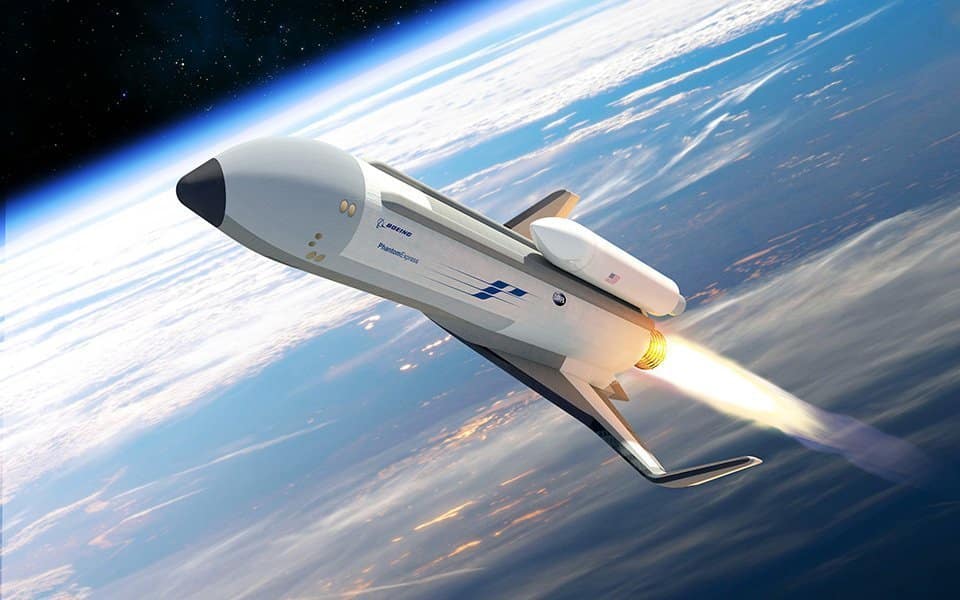
Boeing offers a number of autonomous vehicles to the military, which it claims can help military operators effectively complete both routine and critical missions with less risk of endangering the lives of military operators. In 2017, Boeing Defense, the predominantly non-commercial division of Boeing that focuses on government contracts, reported 29.5 Billion dollars in revenue. This makes it the second largest defense contractor for the US military and the world. Boeing, established in 1916, is a publicly traded company that employs over 120,000 people.
Dragos Margineantu is Chief AI Scientist at Boeing and is the lead scientist on Boeing autonomous plane projects. He holds a PhD in Machine Learning and Computer Science from Oregon State University. Margineantu has served almost the entirety of his 17-year professional career at Boeing.
This report on the military applications of AI at Boeing will cover a portion of the various engineering products Boeing offers:
- The QF-16
- The Blackjack
- The Echo Voyage
- The Phantom Express
The intent of this report is to illuminate the variable military applications of Boeing’s products with AI technologies that the US Department of Defense currently has the capability to implement in combat scenarios.
What Business and Government Leaders Should Know
We believe Boeing has a high likelihood of actually leveraging machine learning. The CTO at Boeing, Greg Hyslop, holds a PhD in Systems Science and Mathematics from Washington University in St. Louis. Although it would seem Hyslop does not have direct experience with machine learning in his career, the trust signals he does possess allow us to believe that he could identify and ask for the requisite information in strategic planning conversations with AI-focused technologists he is in charge of, such as Dragos. We highlight the criteria we use to determine if companies are likely or not to be leveraging artificial intelligence in our article, How to Cut Through the Artificial Intelligence Hype – Three Simple “Rules of Thumb.”
Boeing engineers vehicles and unmanned systems products for air and sea, so it follows that the US military contracts Boeing for work on planes, ships, and submarines. Some key benefits of autonomous vehicles for military purposes could be:
- Long-term, uninterrupted missions: Autonomous craft will not be slowed by the necessities of human operation. Human operators need to eat and sleep, while autonomous craft outfitted with operational payloads do not. This could allow for the vehicle to conduct long-term missions with focus. This might demonstrate the effectiveness of a surveillance team that can track enemy ship movement working without the need for breaks, sleep, or socialization.
- Less maintenance and training costs: Autonomous vehicles are going to get damaged, which is expensive for the military to repair. The advantage in autonomous vehicles comes in the long term. This point is could be demonstrated by looking at the cost of training an expert surveillance operator on a submarine, the facility needed to train the cadet into an expert, the time and salary of the expert instructor, the food and lodging costs of the expert, and travel logistics.
- A safer means of operation: Autonomous vehicles allow operators in the military to stay farther away from the dangers of war. A skilled jet pilot that once needed to perform reconnaissance in an airplane could be replaced by an autonomous drone and an analysis of the drone’s finding, that analyst being miles away in the safety of a military installation.
- Defection is impossible: A machine cannot be bridged to change sides (at this time), bringing all of its secrets with it. Autonomous vehicles add another layer of information security for a military. If a surveillance plane was downed over enemy territory, the pilot could be rescued and interrogated for key military information. This said, autonomous technologies can be hacked, which is its own new security risk, but there are numerous ways to combat that, such as remote self-destruction protocols.
Autonomous Vehicles
The types of technologies used in implementing artificial intelligence for autonomous vehicles are a combination of mechanical devices for physical vehicle operations, navigational instruments, and machine vision.
Although the design of autonomous vehicles will vary from manufacturer to manufacturer and from type of vehicle to type of vehicle, business leaders should note autonomous vehicles generally make use of machine vision in a similar way.
The artificial intelligence operating the vehicle is first trained using a supervised learning process. Machine vision software is trained by numerous mounted cameras all around the autonomous vehicle at various heights and angles that allow it to detect how the craft is moving from every perspective. The software first is trained on hours of human operating footage showing the proper and safe way a vehicle should operate at various times of day, levels of traffic, and weather conditions.
Certain aspects of this footage would have been labeled as key indicators of something while operating underwater, flying or driving. This establishes a bounding box that the AI would have to recognize as an important concept or rule to follow: “a stop sign indicates a stop,” “avoid sea mines underwater at all costs,” “double yellow lines should not be crossed,” for example. An autonomous jet plane moving on the tarmac will not have to adhere to road law as closely but will be trained in ways pertaining to combat, such as how to evade being pursued by oncoming enemy missiles.
New labeled training footage would then be run through the software’s machine learning algorithm. This would have trained the algorithm to discern the sequences and patterns of 1’s and 0’s that form a video of a submarine or jet safely moving to the human eye. Combing this machine vision data with data from non-camera sensors, such as engine trust data, allows the autonomous vehicle to be trained comprehensively.
The vehicle could then get a command to propel itself to a location that is not labeled into its software. The algorithm behind the software would then be able to move itself and its operational payload (for example, the listening devices or advanced sensors it is equipped with) safely to the determined location.
Readers interested in an in-depth example of how to train a machine vision system for autonomous military vehicles may find it in our report, Crowdsourced Machine Vision Training – Use Cases and Explanation.
QF-16
Boeing, known for aerospace, has a product designed to integrate its AI technology into F-16s and convert aging F-16 fighter jets into QF-16, which are autonomously enabled training jets. An autonomous jet has the capability of enabling greater weapon systems training. The design intent for the QF-16 is to allow operators-in-training of missile defense systems to get simulated combat training time in a scenario as close to real as possible.
Using a QF-16 as a substitute for an enemy jet plane, the missile system could be able to spot the “enemy plane” in contested airspace, relay their findings to command, wait for orders in real time, and target and “destroy” the craft with dummy ammunition. Boeing has reported having utilized an autonomous QF-16 at least once before in missile defense system validation.
Below is a short 3-minute video demonstrating the QF-16 take off, maintain a flight pattern, and land autonomously:
Blackjack
The RQ-21A Blackjack is produced by Insitu Inc., a wholly owned subsidiary of The Boeing Company. The Blackjack is intended to have autonomous flight time endurance of 16+ hours per day depending on the configurations of the plane’s tools and payloads. This UAV is Currently flown by Marine Unmanned Aerial Vehicle Squadron 1 and 2 (VMU-1 and VMU-2), supporting expeditionary operations worldwide. The first drones of this kind were used in Afghanistan by the US Marines. The RQ-21 returned from its deployment on September 10, 2014, after flying nearly 1,000 hours in 119 days. Poland, Canada, the Netherlands, and the United States currently operate this craft to various ends.
The Blackjack is an example of autonomous vehicles currently used by the US military, but there have been numerous issues reported with the quality of the product. The 2015 report on the Blackjack by The Office of the Secretary of Defense (OSD) stated that the RQ-21A was “not operationally effective”, “not operationally suitable”, that the “system has exploitable cybersecurity vulnerabilities”. The assessment pointed out several major requirements failures as well.
Below is a short 3-minute video demonstrating how Blackjack takes off, flies, and lands:
Echo Voyage
Echo Voyager is long endurance unmanned and fully autonomous submarine. The Echo Voyager has applications in long-term sea missions. It is able to be at sea for months at a time, delivering a potentially more effective and more affordable underwater military solution over traditional unmanned underwater drones and manned submarines.
Today, remote-controlled probes or submarines perform underwater reconnaissance, both are equipped with radar and other sensors to detect nearby vessels on the water’s surface or potentially other undersea vehicles. Among many other pieces of data, the current whereabouts, the direction of intent, and the current speed of enemy watercraft is important to detect in military scenarios.
Autonomous submarines could allow these reconnaissance missions to be conducted for longer, less interrupted spans of time and potentially for less money. Even with a remote-controlled undersea probe, the operator’s time and attention must be squarely focused on the probe; if the operator’s attention needs to be utilized elsewhere, then the probe must be retracted or remain on standby. A probe on standby in the open ocean can be detected or lost.
The Echo Voyager is currently not being used by any military customers.
Phantom Express
The Phantom Express is an unmanned and autonomous spacecraft designed to take off, enter Earth’s low orbit, deploy a satellite, land, and return to base autonomously. Boeing and the U.S. Defense Advanced Research Projects Agency (known as DARPA) are collaborating on this project. Boeing claims The Phantom Express is designed to be reusable and land on runways similar to the jet planes of today, allowing for multiple launches per day.
The tactical advantage to quickly deploying low orbit satellites could be large. Low orbit satellites with high powered surveillance equipment could detect and record movement on the surface of the planet or the movement of aircraft mid-flight.
Additional military application of this project is on the supply chain management side of military affairs. A craft like the phantom express, outfitted with supplies or perhaps hard drives of research data, could take off at an airfield, fly directly above contested airspace, and land on another uncontested airfield, flying directly -rather than indirectly – to its location, regardless of the geopolitics involved. This would allow for direct travel over contested or enemy airspace where conventional craft and its traditionally human pilots may be endangered.

As this process is currently under development there is no video footage available of the craft operating autonomously. Although currently being researched and developed, It should be worth noting to readers that this project may not see true field work for many years, although Boeings partnership with DARPA on the project does indicate the US Military’s clear interest in the craft.
Header Image Credit: Defense Systems







